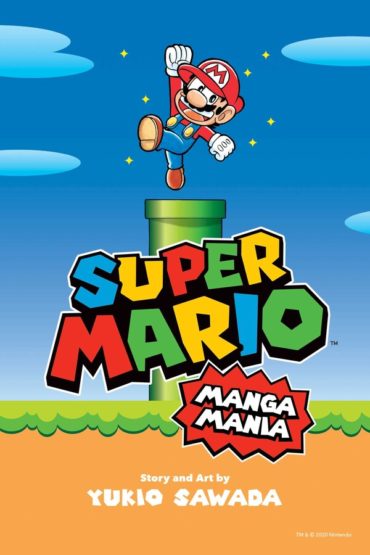Super Mario Manga Mania Review
In celebration of Mario’s 35th anniversary, we have not only limited-time video game releases and the typical merchandise, but this release of a collection of stories from the Super Mario-kun manga series, hand-picked by author Yukio Sawada himself.
The actual comic that this has been taken from is a long-running serialisation in the pages of CoroCoro, the children’s comic that’s particularly known for focussing on video game properties such as Pokémon, and this marks the first time that any material from it has been made available in English. This isn’t something I would expect even some of the more hardcore Mario fans to be familiar with, and, taking that into account, coming into a compilation of stories rather than starting at the beginning is a bit of a risk, and one that doesn’t exactly pay off as you start digging into what’s on offer.
It actually starts off pretty well, with a fun little tale about Bowser being too hot and wanting to eat ice cream, before the opening chapter cuts away to looking at a specific area from the original Paper Mario, Mt. Lavalava. This then sets the tone for the rest of the book, where most of the individual stories adapt certain parts of Mario games, with their own comedic twist.
While I like this overall concept, I found the stories themselves to be a bit hit-and-miss. I personally preferred the slightly sweeter ones, where the series’ very childish sense of humour wasn’t as in your face, for example an early one focussing on the Gooper Blooper boss fight from Super Mario Sunshine ends up being a rather sweet spin on a nostalgic part of that game, while a later chapter where Yoshi ends up bonding with a Chain Chomp works especially well as a standalone story in this kind of compilation. A lot of the rest of them, however, either fall flat on the comedy, or ruin the iconic moments that they are based on. Putting in the final boss fight from Mario & Luigi: Partners in Time, for example, doesn’t seem like a great move as you can’t assume that all of your readers have played the game to completion, although it does have some of the strongest gags and puns in the book, so I can see why Sawada included it. (And on that note be prepared for some face-palm inducing ones, such as “It’s do ore die” in one of the later chapters.)
You also have to consider that the majority of these stories are from 2000s-era Mario games, an era which I get the impression that Sawada is particularly fond of. This is completely fine of course, but it seems to conflict with the actual target audience for the book. I think you do have to be a Mario fan to get the most out of the references to these classic games, but the content itself is a bit too childish in places for the now 20-to-30-somethings who would have played them in their childhood, while it misses out on the more recent titles that kids of today may be more familiar with.
The artwork itself however is very enjoyable to look at, being drawn in a very comedic and over-the-top chibi style that works really well for this type of manga. It’s great at conveying unfortunate situations with some grotesque but oddly mesmerising images of the characters, such as Bowser sweating profusely in the summer heat (which looks pretty gross) or Mario getting continually electrocuted by a wire trap; overall strongly appealing to that 8 to 12-year-old age group that it would have originally sold to in Japan.
It can seem a little busy at times, however, with each panel crammed with action, speech bubbles and sound effects. This is good for keeping up the pace, but I think a couple of stories could have done with spreading out and slowing things down a bit. There are also some author notes placed in the middle of chapters which really interrupt the flow, and should have been placed in between them.
You also get a bonus chapter at the end of the manga, Super Mari-old, which seems like a bit of an odd inclusion on the face of things, but actually comes with a touching message that reflects on how Sawada dealt with the death of his father, and I think it really lands this well with a very personal touch. Again, this is not something that really fits with the manga’s child-friendly image (and does come with a content warning for parents) but stamps down that these are the works that Sawada is most proud of and that this is “his book”.
Overall, Super Mario Manga Mania is a bit of a weird release. Taking it at face value as a collection of comics adapting iconic moments of the Mario games shows it to be very hit-and-miss with an unclear focus on who this release is actually aimed at. If you are a fan of the Mario games and open to trying something different then there is stuff to enjoy here, and the inclusion of the author’s personal experience at the back of the book really opens it up; however, a more general manga reader may have a much harder time getting into it.


